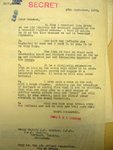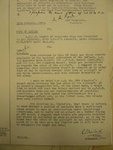Glider
Major
I think its fair to say that there was nothing wrong with the Defiants Turret, just that it was designed to carry one limiting its adaptability. There was no excuse on behalf of the RAF command over this waste of men and resources. The most successful two man fighter of all time, the The Bristol Fighter of WW1 didn't do all well until the pilots learnt to stop trying to position the plane for the rear gunner and fight it like a normal fighter. Leaving the rear gunner to keep the tail clear and take what oppertunities arose. By giving the Defiant no front guns they made it useless for day fighting.
Its also worth remembering that Wellingtons, Lancasters and Halifax's were designed with a ventral turret, they just didn't work.
Its also worth remembering that Wellingtons, Lancasters and Halifax's were designed with a ventral turret, they just didn't work.


